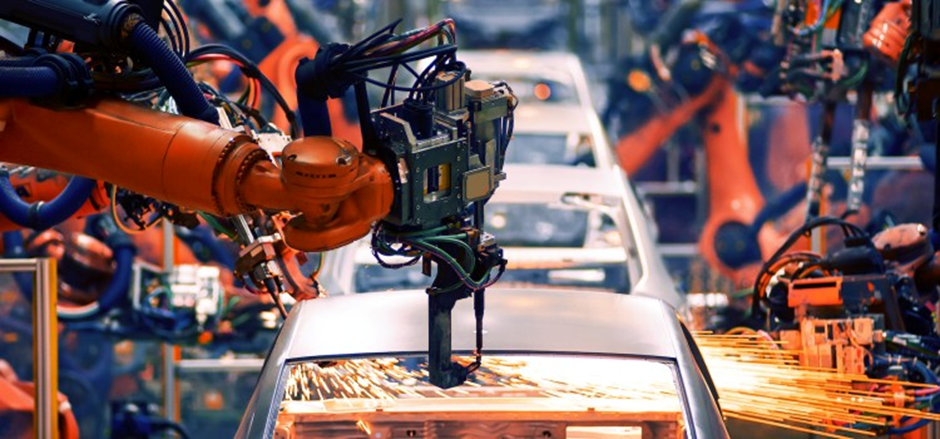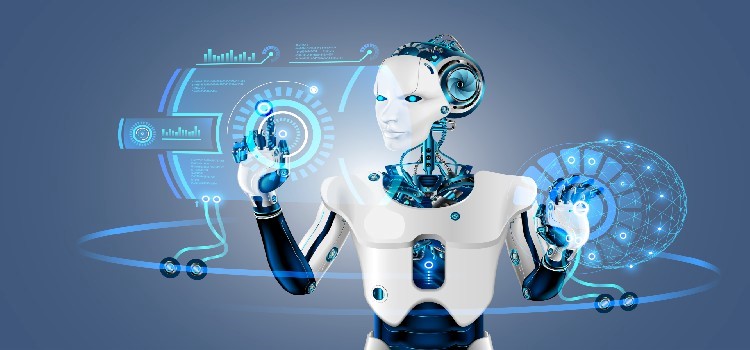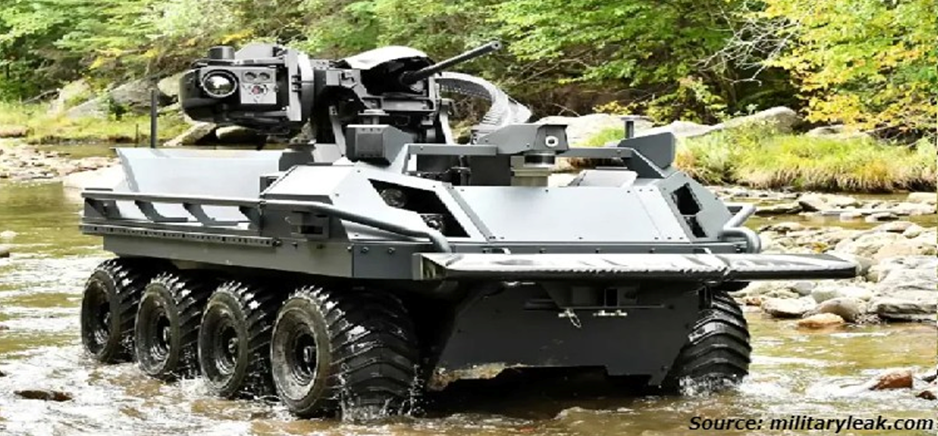Trends Redefining the Autonomous Mobile Robot Landscape
17-Sep-2024
_Market.png)
Introduction
The field of autonomous mobile robots (AMRs) is undergoing a remarkable transformation with technological advancements. These advancements make AMRs more versatile, reliable, and cost-effective than before, leading to increased deployment in a wide range of industries. As technologies advance, we can expect to see AMRs becoming even more widespread and versatile in the years to come.
Key advancements driving this transformation include improved sensors and navigation systems, advanced artificial intelligence (AI), and cloud-based connectivity. These advancements are equipping AMRs with the capability to complete complex tasks, operate with increased efficiency, and ensure a higher level of safety. Consequently, businesses across diverse industries such as manufacturing, healthcare, agriculture, and logistics find AMR increasingly attractive for their operations. The following are the trends redefining the autonomous mobile robot landscape.
Artificial Intelligence and Machine Learning
Autonomous mobile robots have greatly benefited from the integration of artificial intelligence (AI) and machine learning (ML). These technologies enable robots to operate independently and intelligently in diverse environments. Through AI and ML algorithms, robots can perceive their surroundings using sensors and make informed decisions based on the collected data. This allows them to navigate complex terrains, avoid obstacles, and adapt to dynamic situations.
Additionally, ML algorithms empower robots to continuously learn and improve their performance over time, enhancing their mapping, localization, and decision-making capabilities. This combination of AI and ML has revolutionized AMRs, enabling them to operate with increased efficiency, safety, and adaptability in various industries such as logistics, healthcare, agriculture, and others. The ongoing advancements in AI and ML are expected to drive further innovation in AMRs, unlocking even more possibilities for their use in real-world applications.
In March 2023, Thira Robotics launched a new generation of AMRs called Yara for industrial environments. These highly-flexible and adaptable AMRs have a modular design, allowing easy customization and expansion. Yara robots are equipped with advanced AI algorithms, which enable them to navigate complex environments, interact with other machines, and perform tasks such as material handling, logistics, quality control, and inspection. They are scalable, and can work independently or as part of a larger robot network. This makes them suitable for various industrial applications, including manufacturing, warehousing, healthcare, and hospitality.
Enhanced Sensor Technologies
Sensor technologies have been instrumental in the advancements of AMRs. Recent developments have led to significant improvements in sensor capabilities, offering robots more accurate and detailed information about their surroundings. Light Detection and Ranging (LiDAR) sensors, cameras, depth sensors, and ultrasonic sensors have become more accessible, compact, and precise than before, enabling robots to perceive their environment in real time.
These sensors facilitate the detection of obstacles, accurate mapping, and autonomous navigation with enhanced accuracy and reliability. Leveraging these advanced sensor technologies, AMRs can operate in complex and dynamic environments, effectively avoiding obstacles, adapting to changing conditions, and improving their overall autonomy and performance.
In March 2023, OTTO Motors, a leading provider of AMRs, unveiled its newest AMR, OTTO 600. It incorporates OTTO's autonomy software and integrates advanced sensor technologies. The OTTO 600 is equipped with state-of-the-art LiDAR sensors, cameras, depth sensors, and ultrasonic sensors.
OTTO 600 can perceive its environment in real time with improved accuracy and reliability. It can detect obstacles effectively, create accurate maps, and autonomously navigate complex and dynamic environments. These advanced sensors enable the OTTO 600 to adapt to changing conditions, avoid obstacles, and significantly enhance its overall autonomy and performance.
Swarm Robotics
Swarm robotics is a transformative concept in AMRs, where multiple robots work together as a cohesive unit to accomplish tasks. Inspired by the collective behavior observed in social insects such as ants or bees, swarm robotics enables AMRs to collaborate and communicate with one another, share information, and coordinate their actions.
This approach offers several advantages in various industries. In agriculture, a swarm of robots can efficiently monitor and tend to crops, optimizing resource allocation and improving productivity. In logistics, AMRs can work together to transport goods, enabling faster and more efficient distribution. In search and rescue missions, swarm robotics allows for effectively exploring large and hazardous areas, increasing the chances of finding and rescuing survivors. By leveraging the power of collective intelligence, swarm robotics has the potential to revolutionize the capabilities and efficiency of AMRs across diverse applications. This, in turn, opens up new possibilities for collaborative and adaptive robotic systems.
The Integration of the Internet of Things (IoT) into AMRs
The convergence of the Internet of Things (IoT) and AMRs has emerged as a significant trend in recent years, revolutionizing the capabilities and applications of robotic systems. This trend entails integrating IoT technologies with AMRs to enhance functionality, connectivity, and overall performance. By leveraging the power of IoT, AMRs can interact with their environment, exchange data, and seamlessly integrate into larger systems. This leads to a new level of automation and efficiency.
One of the key developments in this trend is the integration of IoT sensors and devices into AMRs. These sensors enable robots to gather real-time data about their surroundings, such as temperature, humidity, presence of objects, and others. By collecting and analyzing this data, AMRs can make intelligent decisions, adapt to changing conditions, and optimize their operations. For example, an AMR with environmental sensors can autonomously adjust its behavior based on temperature or humidity levels, ensuring optimal performance in various settings.
Another development is IoT connectivity to enable communication between AMRs and other devices or systems. AMRs can exchange data with central control systems, cloud platforms, or other robots through wireless communication protocols, such as Wi-Fi or Bluetooth. This connectivity enables coordination, synchronization, and collaboration between multiple robots, leading to more efficient workflows and improved task allocation. For instance, a fleet of AMRs in a warehouse can communicate with each other. A central control system can be used to optimize the picking and sorting of inventory, resulting in streamlined operations and reduced human intervention.
Additionally, the integration of IoT into AMRs facilitates remote monitoring and control. Through IoT-enabled applications, operators can remotely monitor the status, location, and performance of AMRs in real time. This capability allows for proactive maintenance, troubleshooting, and operational adjustments, minimizing downtime and maximizing productivity. It also enables the collection of valuable data for further analysis and optimization of AMR operations.
Moreover, combining IoT and AMRs opens up possibilities for advanced analytics and decision-making. By leveraging cloud computing and data analytics, the vast amount of data collected by AMRs can be processed and analyzed to derive insights, optimize routes, predict maintenance needs, or even enhance operational strategies. This data-driven approach enables continuous improvement and optimization of AMR operations, increasing efficiency and cost-effectiveness.
Conclusion
AMRs are currently undergoing a transformation with rapid technological advancements. Integrating AI and ML has empowered AMRs to operate autonomously and make intelligent decisions based on sensor data. Furthermore, improved sensor technologies have greatly enhanced their perception and navigation capabilities. The emergence of swarm robotics has revolutionized AMRs, enabling seamless collaboration and communication among multiple robot and resulting in more efficient task execution. The integration of IoT has further elevated their functionality and connectivity.
Future AMRs will exhibit improved capabilities, with the ability to handle delicate objects and perform intricate tasks precisely. Advancements in mobility will enable robots to navigate challenging terrains, including uneven surfaces, stairs, and obstacles. This will expand their range of applications in industries such as construction and search and rescue.
About the Author
 Shankar Nishant is a researcher at Next Move Strategy Consulting with a cumulative experience of more than four years. Shankar is enthusiastic about new technology, enjoys working with a diverse range of global clients, and has delivered numerous market reports in multiple domains. He can be reached at info@nextmsc.com
Shankar Nishant is a researcher at Next Move Strategy Consulting with a cumulative experience of more than four years. Shankar is enthusiastic about new technology, enjoys working with a diverse range of global clients, and has delivered numerous market reports in multiple domains. He can be reached at info@nextmsc.com
Add Comment
Related Blogs
Major Industry Leaders and Their Impact on the Automotive Robotics Market
Automotive robotics market expected to experience rapid grow...
Tech Titans Transforming AI Robots: IBM, Intel, and Microsoft's Influence
According to Next Move Strategy Consulting, the AI Robots Ma...
UGVS and the Power Players: Genetal Dynamics, Qinetiq, and Boston Dynamics
According to Next Move Strategy Consulting, the UGV Mar...










